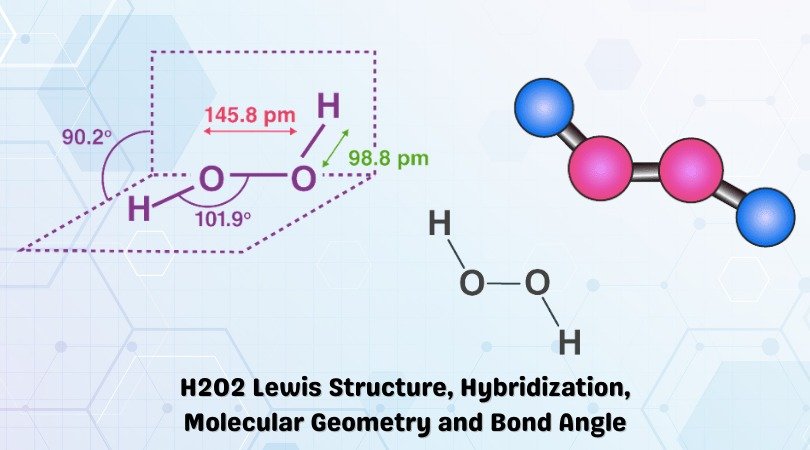The chemical formula ClO3– represents Chlorate ion. Chlorine can reach oxidation states of +1, +3, +5 and +7. In this case, as seen in the figure, Chlorates exist in a +5 oxidation state.
With an abundance of oxidizing elements, the Chlorate ion and its salts make for powerful oxidizing compounds. Potassium Chlorate (KCLO3) is a commonly used oxidizing agent found in various objects from disinfectants to pyrotechnics & explosives.
The compound has the following properties:
| Name of the molecule | Chlorate (ClO3–) |
| No. of valence electrons | 7+ (6×3)+1 = 26 valence electrons |
| Hybridization | sp3 |
| Bond Angles | 109.5° |
| Molecular Geometry of ClO3– | Trigonal Pyramidal |
Contents
ClO3– Valence Electrons
A Chlorate ion consists of one chlorine atom and three oxygen atoms. There also exists a negative ionic charge of -1 in the ion.
Being in group 7 of the periodic table, Chlorine has seven valence electrons with a valency of -1. Hence the famed Cl– ion. Chlorine’s electronic configuration is given by [Ne]3s23p5. The possibility of electrons in its d shell makes it hypervalent.
Therefore, the single Chlorine atom contributes 7 x 1 = 7 electrons.
Being in group 6 of the periodic table, Oxygen has six valence electrons and has a valency of -2. Oxygen’s electronic configuration is 1s22s22p4.
Therefore, given 3 oxygen atoms contribute 6 x 3 =18 electrons.
The anionic charge of -1 and contributes one valence electron.
Therefore, the total valence electrons in the chlorate ion is 7 + 18 +1 = 26
Lewis Structure of ClO3–
The Lewis dot structures of an element represent a schematic arrangement of its constituent molecules, atoms and their electron bonds.
The total number of electron pairs in a chlorate ion is given by:
26 valence electrons ÷ 2 = 13 pairs.
The Chlorine atom takes up a central position in the structure due to its ability to share a higher number of electrons. Therefore, it becomes a conductor for more electron bonds than Oxygen hence taking up the center stage as shown in the figure.

3 electron pairs are shown in the structure. The remaining pairs can be arranged according to the octet rule. The electrons are placed starting from the outside in. The three oxygen atoms take in 3 pairs each and the final pair is marked by Chlorine as shown in the figure.

To determine the most stable Chlorate (ClO3–) structure, we use the concept of formal charges. Formal charges for an element/structure help determine its most stable Lewis Structure state. It is determined such that the elemental charge on each atom is closest to zero.
FC = Valence Electrons – Non-bonding electrons – (Bonding electrons ÷ 2)
In this case,
| Element | V | N | B/2 | FC |
| Cl | 7 | 2 | 6/2 | +2 |
| O | 6 | 6 | 2/2 | -1 |
Charges on these atoms as shown in the figure make it unstable. The higher the charges, the more unstable it is.

To combat this, we can transfer the lone pairs in the oxygen atoms to form bonds with Chlorine in the middle. This gives Chlorine more than 8 electrons in the middle. This is feasible due to Chlorine’s empty 3d orbits, which make it an exception to the octet rule.

Chlorate ions exist in multiple resonant states due to the shifting of bonds as shown in the figure.

ClO3– Hybridization
The central atom, Chlorine (Cl), forms covalent bonds of double and single nature with the surrounding atoms of Oxygen. To calculate ClO3– hybridization state, we need to determine the number of lone pairs and the number of sigma bonds present in the ion.
Since Chlorine is in the third row in the periodic table, it is capable of expanding its orbitals in an excited state. Its electronic configuration is given by [Ne] 3s2 3p5.
Therefore, the two lone pairs fill in the 3s orbital and the three sigma bonds present fill-up the 3p orbital. Now, we insert the two pi bonds into the first two 3d orbital spaces.
The rest of the electrons from the sigma bonds are filled into the 3p orbital.
Therefore, the hybridization of ClO3– is sp3.
ClO3– Bond Angles
Due to the repulsion of electrons on the surrounding oxygen atoms and the lone pair on Chlorine, the atoms get pushed apart and form bond angels of 109.5°.
ClO3– Molecular Geometry and Shape
Chlorine forms the central atom in the ClO3– ion with oxygen atoms surrounding it. According to the VSEPR theory (Valence Shell Electron Pair Repulsion), the lone pair on Chlorine and the electron clouds on the surrounding oxygen atoms repel each other.
Since we know that the steric number of ClO3– is 4 (1 lone pair and three bonded pairs), we can determine that the Molecular geometry of ClO3– is Trigonal Pyramidal.
From the Lewis structure above, we know that its electronic shape is tetrahedral.

CONCLUDING REMARKS
Let’s quickly summarize the salient features of ClO3–
- ClO3– consists of one Chlorine atom and three Oxygen atoms
- In its most stable state, Chlorine forms three covalent bonds with the surrounding Chlorine atoms making for three bonded pairs in the center with a lone pair of Chlorine.
- ClO3– has an sp3 hybridization state.
- ClO3– has a trigonal pyramidal structure with bond angles of 109.5°.




